Kiel Canal (Nord-Ostsee Kanal) is a 98 km long artificial canal located in Germany. It was built in 1895 to fulfill the needs of the German Navy and merchants to connect the Baltic Sea with the North Sea.
Now, after more than a century, the Kiel Canal still provides vessels with a shorter and more protected route, avoiding Danish Straits. It’s the busiest man-made waterway in the world with an annual average of 32 000 ships transporting 100 million tons of goods. That’s 90 ships daily!
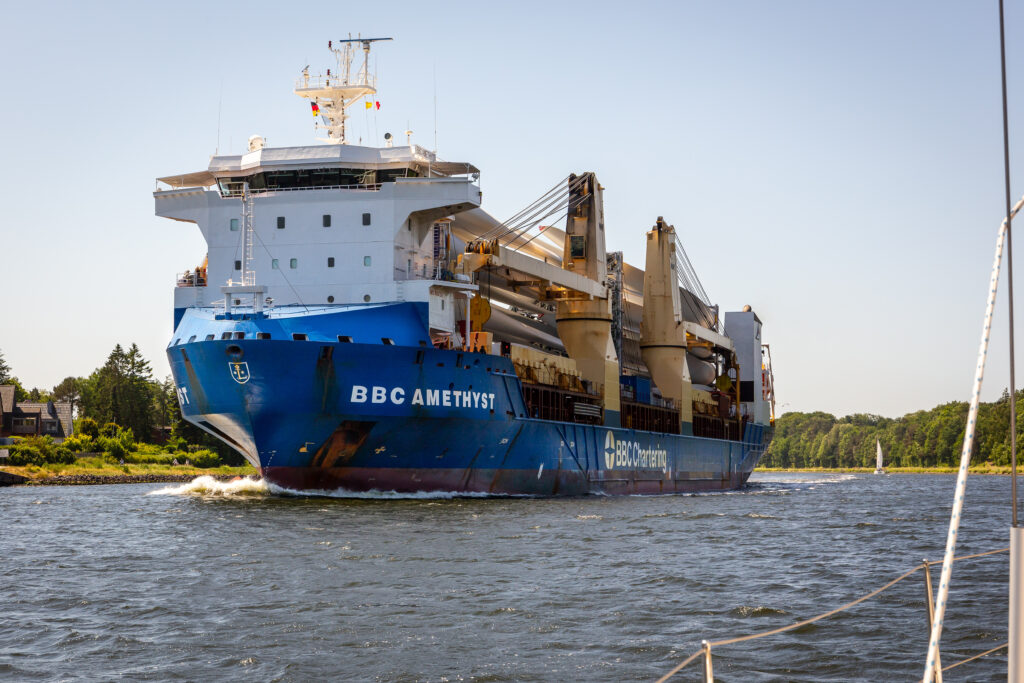
Why should you choose Kiel Canal?
Navigating through the Kiel Canal saves approximately 243 NM compared to the route through the Danish Straits. Not only it saves the time (and fuel), but also provides good protection over storm-prone routes around the Jutland Peninsula.
How to pass the Kiel Canal with a sailboat?
Now, let us guide you through the whole Kiel Canal transit. We will start from the West, as it was exactly our case. But no worries – coming from the East is pretty similar, you just need to reverse all information given here.
Kiel-Holtenau lock
There are two locks in Kiel-Holtenau: smaller and bigger. At the time of writing (2024), only the big locks are operational, so do not proceed to the small, northern locks as advised in many outdated publications or pilot books.
Approaching from Kiel, recreational vessels must wait in the designated waiting area (red triangle on the map below).

When to enter the lock?
The most important thing while waiting in the designated area are the signal lights located on the mast of the lock island (red dot on the map above). The first light to look for is white over red, which means “prepare to enter”. It is followed by intermittent white light signalling that recreational craft are permitted to enter. All other light combinations you can simply consider as “do not enter”.
It is mandatory to monitor VHF channel 12 for any additional instructions. You can also seek clarification or confirmation with lockmaster on VHF 12 or phone number +49 (0)431 3603 152.
Once you have entered at the lock you need to tie up to the jetty. The wooden jetties are very low, so make sure your fenders are on the water level.
A horn will sound to advise you that the gate is closing and the water level will start to drop. After a short time, another horn blast will announce that the exit gate is opening and you can proceed.

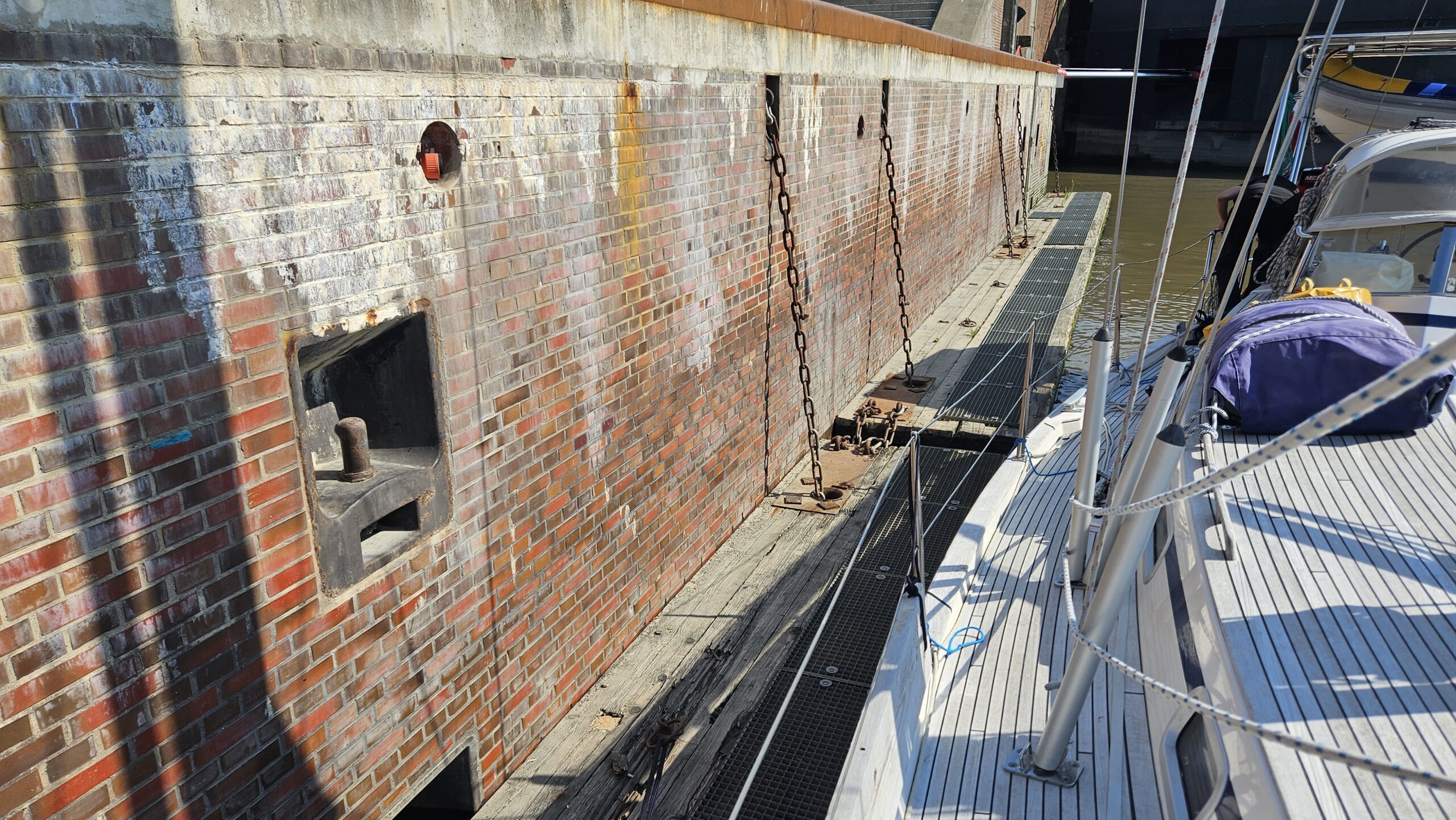
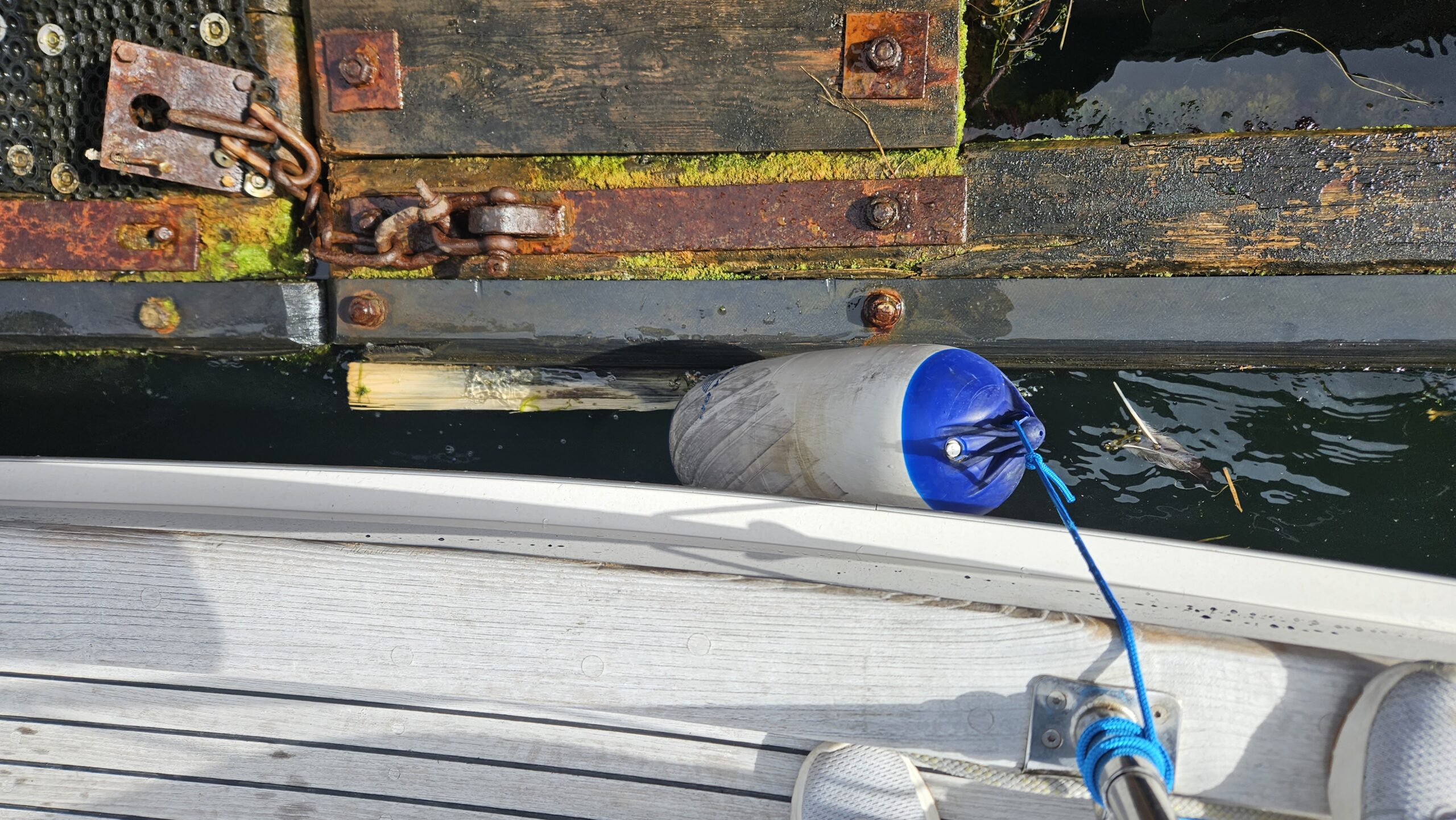
How much does the Kiel Canal transit cost?
Current Kiel Canal transit fees for recreational craft are as follows:
| up to 10 m | €12 |
| over 10 m to 12 m | €18 |
| over 12 m to 16 m | €35 |
| over 16 m to 20 m | €41 |
| over 20 m | €43 |
| each additional 1 meter per meter started | €1 |
Where to pay for Kiel Canal transit?
Payment for Kiel Canal transit is possible at payment machines or designated harbor masters. The whole process is pretty straightforward and fees are modest.
From March 2023, as part of a pilot project, it is possible for pleasure craft fees to be paid in advance online for sailing. You can find further information on the website www.wsv-webshop.de
This is an example of a payment machine at Kiel-Holtenau:
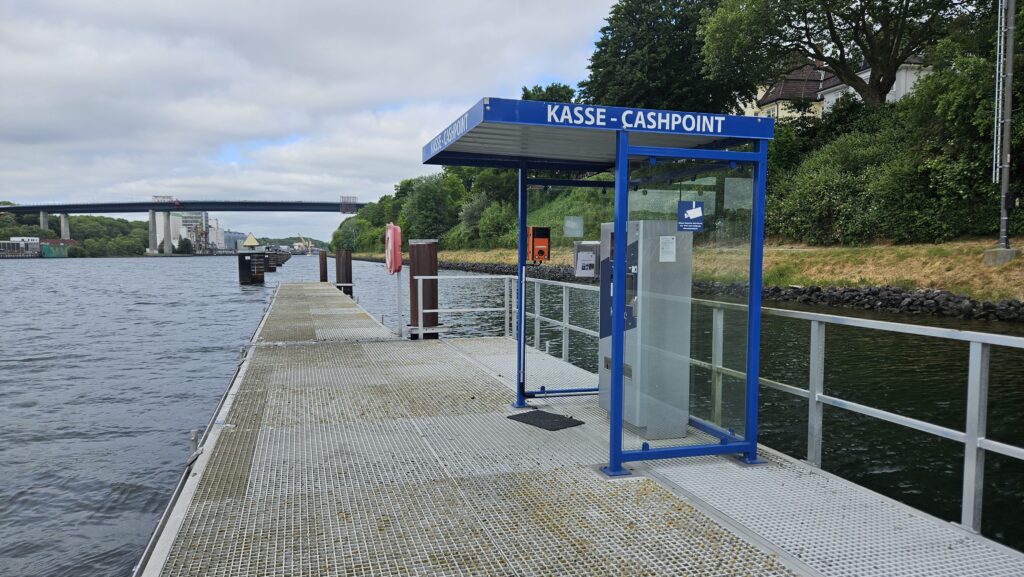
Once in the canal
Once you’ve completed locking, you have around 98 km of relatively easy journey. Assuming average speed of 5 kts, it’s quite a long trip and some sailors prefer to split the route over two days.
If you decide to take the pace a little slower, you can stay overnight in these designated berths:
- Berth in Kiel-Holtenau
- Recreational craft roadstead in Lake Flemhude
- The Anchroage in Lake Borgstedt
- Marina in Lake Obereider
- Berth before Gieselau lock
- Brunsbüttel recreational craft berth
It is prohibited to berth or moor at any other structures, dolphins or Canal installations, and recreational craft are not allowed to navigate the canal outside daylight hours.
Sidings in the Kiel Canal
Sidings are passing places, where the canal is significantly wider than the rest of the waterway. It makes it possible for a large ship to pass other ships or to overtake. If it’s necessary, signal lights on the masts will advise you of the proper action to take:

Ferries crossing the Kiel Canal
Along the canal, there are several ferry crossings, which you need to look out for. Adjust your speed to let them pass safely.
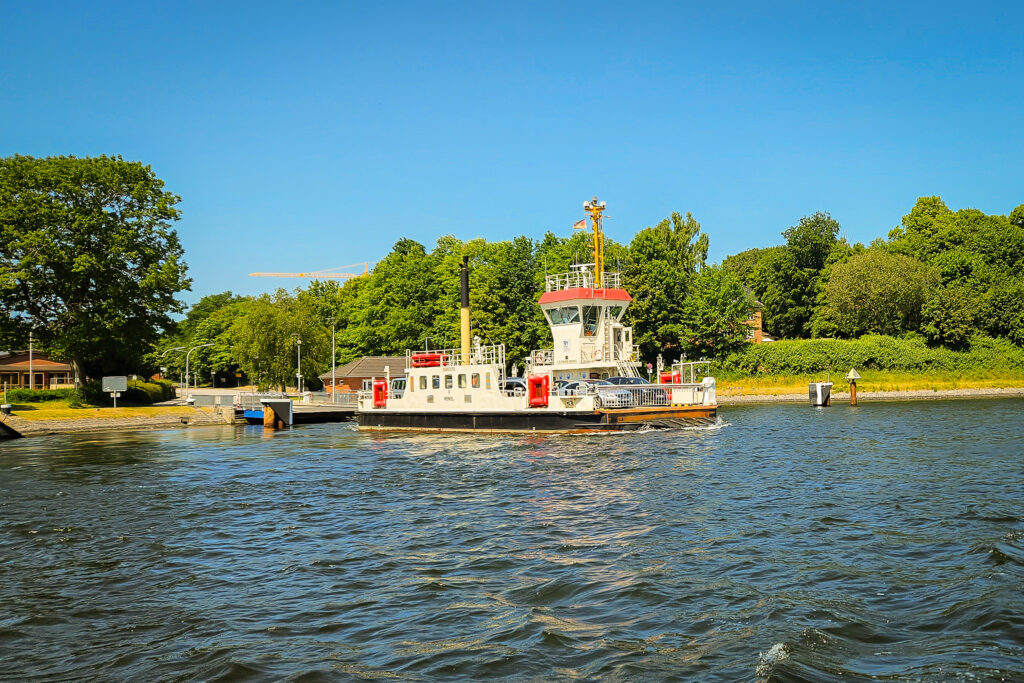
The Rendsburg transporter bridge
About halfway down the Canal, there is the Rendsburg transporter bridge. It is unique because as well as being a transporter bridge, it is a railway viaduct. The bridge opened to traffic in 1913 and continues to carry it to the present day.
Despite the fact that the bridge itself has 42 m of clearance, the ferry hangs lower. It runs daily every 15 minutes from early morning until late at night. There have been many collisions between the gondola and passing vessels. The gondola has now been equipped with an AIS transponder to help with safe passage.

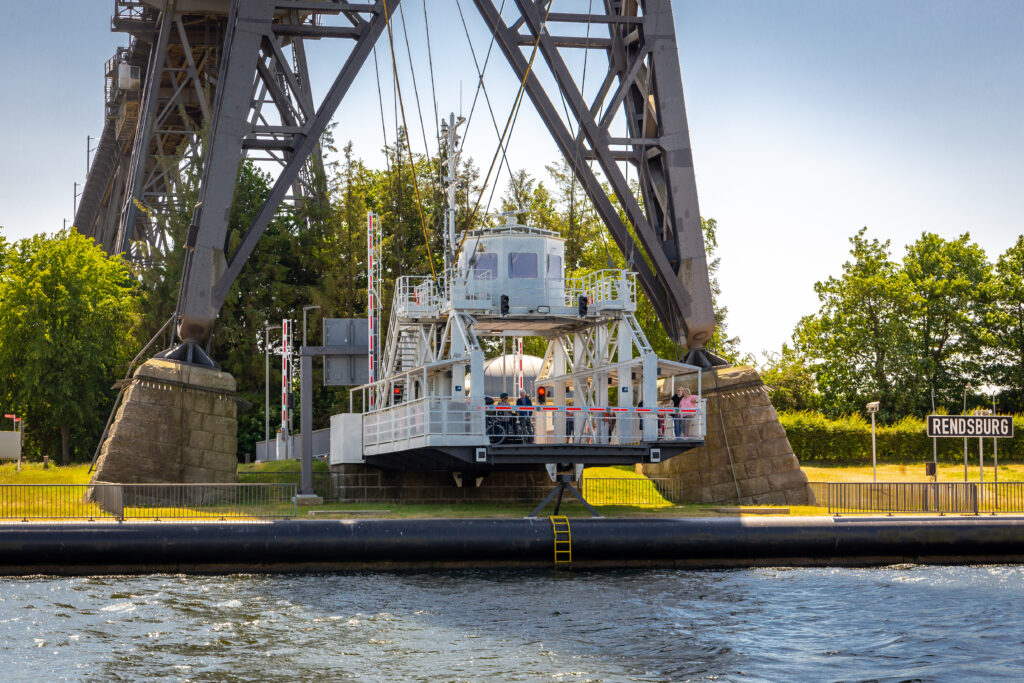
Other rules in the canal:
- Keep to the right.
- Maximum speed is 8kts (15km/h) over ground.
- Sailing is prohibited, however recreational craft may additionally set sails (a black cone pointing down must be displayed).
- Waterskiing, jet biking, windsurfing is prohibited.
- In case of fog, if it is unsafe to continue to the next siding, vessels can moor at a suitable site on that stretch of the canal.
- Recreational craft with a length of 20m or more must operate an AIS Transponder.
- Recreational craft with a draught exceeding 3.1m are subject to mandatory pilotage.
- Multi-hulled vessels used for recreational purposes are exempt from the mandatory pilotage requirement up to a total width of 12m and length of 20m.
- Towing – a powered recreational craft may only tow one recreational craft whose length must not exceed 15m.


Brunsbüttel lock
If you transit Kiel Canal to the West, Brunsbüttel lock is your exit into the Elbe River. Recreational craft waiting areas are shown in red on the chartlet below:

Leaving Kiel Canal via Brunsbüttel lock should be timed with favorable currents in the Elbe river. Brunsbüttel recreational craft berth on the North side of the locks is a convenient place to stop and wiat for a favorable current.
Often, you’ll have to raft with other boats, as the space is limited. It will also be noisy, as you are moored very close to the large locks with constant commercial vessel traffic, but the views are quite unique.


Summary – Kiel Canal with a sailboat
To sum up, the Kiel Canal transit can be a very pleasant experience. Apart from the benefits we have mentioned, it is also a very interesting green inland route, which, as sailors, we don’t have many occasions to navigate. Thanks to the availability of well written and often updated recreational craft guidelines, it is a straightforward and hassle-free experience. This route is open to everybody, not only to commercial shipping. At no point did we feel that we were not welcome there.

If you would like to know more, then please ask a question in the comments section. You can also find more information on my personal blog linked in my bio.


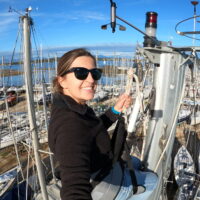







One should make sure to have enough diesel. It’s possible to fuel in Rendsburg, but that’s the only possibility inside the locks. Rendsburg is also the only possibility to stop in a civilised place. We once arrived from the west with almost empty tank, expecting to be able to fill up in Brunsbuttel. It was a miracle that we managed to get all the way to Rendsburg.
The two last items on the signal list may need some better explanation.
Hi Aleksandra, nice blog on a very useful subject! As Tobias mentioned diesel is a problem, we ended up catching a lift to a petrol station and filled up some additional jerrycans. Also the current in the Elbe shouldn’t be underestimated, we managed (twice!) to mess up the tidal times and found ourselves with 5 knots against. As an alternative route to avoid Skagen (the Nothern point of the Danish peninsula Jutland) I suggest passing Limfjorden (Thyborøn-Hals). You will need to sail further North and battle with the North Sea a little longer but once there beautiful sailing grounds are waiting to be explored.